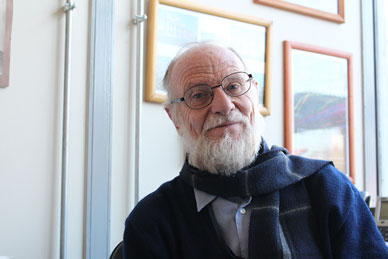- After a thorough study, a research team of Universidad de Santiago found the transmitter that causes ejaculation in men: the ATP (adenosine 5’- triphosphate).The study was led by Dr Juan Pablo García-Huidobro, professor at the Faculty of Chemistry and Biology. This work means an important contribution to modern medicine and it has already been published by Biology of Reproduction (USA), one of the most renowned journals worldwide.
The journal Biology of Reproduction published an article submitted by Dr Juan Pablo García-Huidobro, professor at the Faculty of Chemistry and Biology. The article is the result of the study in which he determined that ATP (adenosine 5’- triphosphate) is in charge of contracting the smooth muscles that form the vas deferens (which is in charge of carrying the sperm) that, through its mechanism, contracts reflexively and propels sperm forward.
The study involved a multidisciplinary scientific team and it opens big opportunities for modern medicine.
The study also intended to define if the ATP was responsible for contracting the circular muscular layer, which is in charge of preventing retrograde ejaculation.
“The ATP acts as a cotransmitter in the longitudinal muscles, but not in the circular ones, and from a technical point of view, it is interesting, because it shows that the circular layer is controlled by other mechanisms that we could not precise during this study. We were able to show that the ATP works as a powerful sympathetic cotransmitter in the longitudinal layer,” Dr García-Huidobro said.
The biological material used for the laboratory tests was obtained by means of an agreement between the research team and Clínica Santa María. “The biopsy tissues were from young healthy men that wanted a vasectomy as a contraception method,” he explained.
In a vasectomy surgical procedure, the vas deference is tied and the central portion is severed.
“We were able to get very good material for the biological study, because it came from young and very healthy people. We had to comply with all the ethical requirements involved and the informed consent procedures to conduct our study,” he added.
Impact on human physiology
The study conducted by Dr García-Huidobro determined the precise mechanism in which ATP is involved.
“We were able to establish that the ATP receptor is located in a very specific part of the membrane of the longitudinal smooth muscles called lipid rafts. Then, we could find specific details on where this receptor is functionally located,” he said.
In this way, the study results open several new questions and possibilities to understand human physiology and its relation with modern medicine.
He said that it is important to learn what is involved in this physiological process because it could be related to fertility disorders or it could contribute to masculine contraception.
Now we learned that ATP is the key transmitter in the ejaculation process, professor García-Huidobro says that it could help to develop ATP-targeted drugs for clinical cases that require fertility aids or control.
Professor García-Huidobro highlights the importance of having multidisciplinary research teams and the value of socializing the information of the studies, in order to improve the cultural and scientific capital in the country.
“There are many details of the studies that remain secret. Many of these research works were conducted with the participation of different research teams, and this is very important, because wherever a study is conducted, undergraduate, doctorate and post-doctorate students are required. This variety of people is able to develop very innovative methods that have a training-effect, resulting in very notable research people. It is not just a professor by himself: it is a team that makes all these findings possible,” he concluded.
Translated by Marcela Contreras



